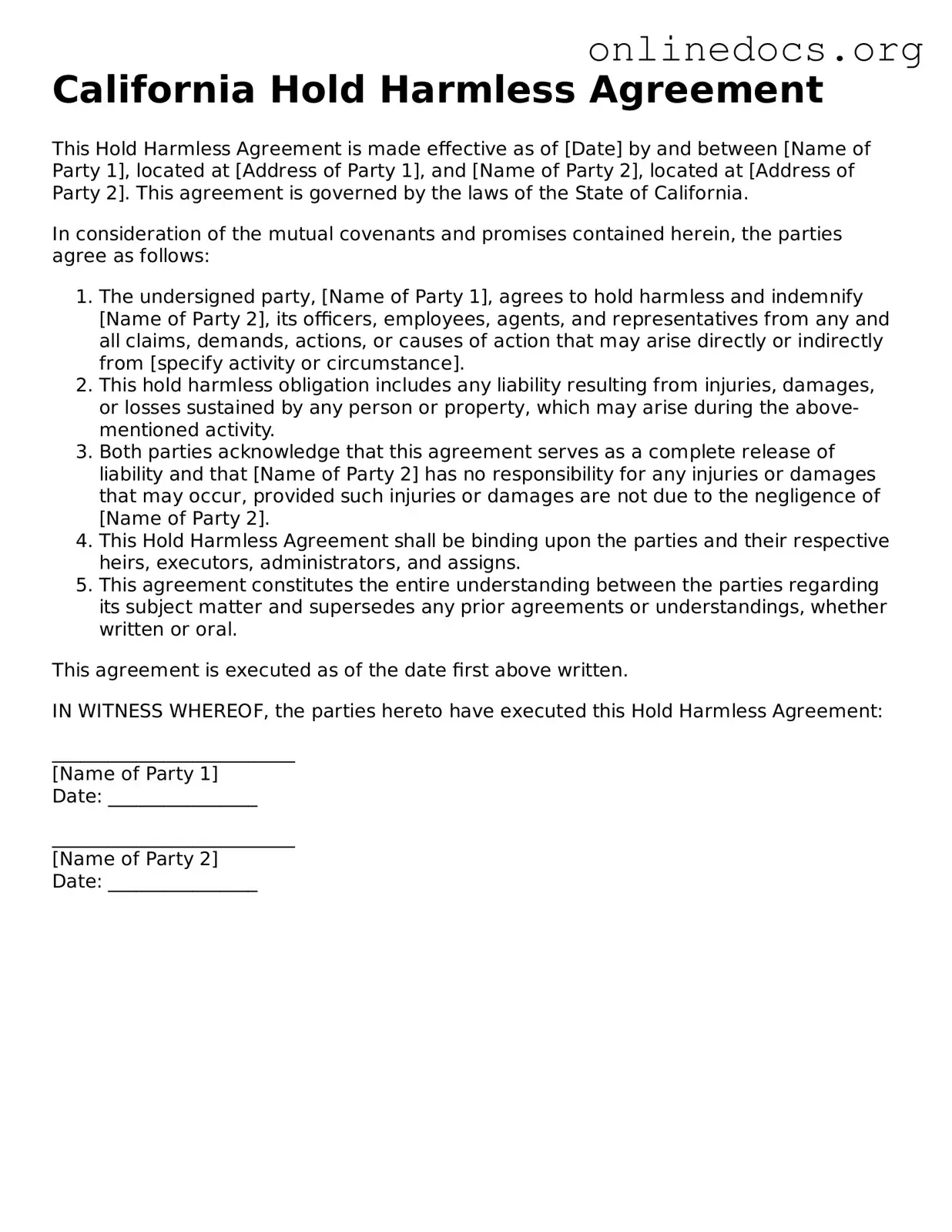When it comes to filling out a California Hold Harmless Agreement, many individuals encounter pitfalls that can lead to confusion or even legal complications. One common mistake is failing to provide complete information. The agreement requires specific details about the parties involved, including names and addresses. Omitting any of this vital information can render the document ineffective.
Another frequent error is neglecting to clearly define the scope of the agreement. A Hold Harmless Agreement should specify the activities or circumstances for which one party is being held harmless. Without this clarity, the agreement may not protect the intended party adequately, leaving them vulnerable in the event of a dispute.
People often overlook the importance of including a date on the agreement. While it may seem trivial, the date establishes when the agreement takes effect. This is crucial for determining the timeline of any potential claims or liabilities that may arise later. Failing to date the document can lead to ambiguity and challenges in enforcement.
Additionally, many individuals do not read the entire agreement before signing. This oversight can result in unexpected obligations or liabilities that one might not have agreed to if they had taken the time to review the terms carefully. Always read the fine print; it can save you from future headaches.
Another mistake is not having the agreement notarized when required. Certain situations may necessitate notarization to ensure the document's authenticity and enforceability. Skipping this step can weaken the agreement’s standing in legal matters.
People sometimes forget to include a clause that addresses the governing law. This clause indicates which state’s laws will apply in the event of a dispute. In California, this is particularly important, as laws can vary significantly from state to state. Omitting this detail can lead to confusion if a disagreement arises.
Lastly, failing to keep a copy of the signed agreement is a common error. After the document is executed, it is essential to retain a copy for personal records. Without it, proving the terms of the agreement can become challenging, especially if a dispute occurs. Keeping organized records is key to ensuring that all parties adhere to the agreed-upon terms.
